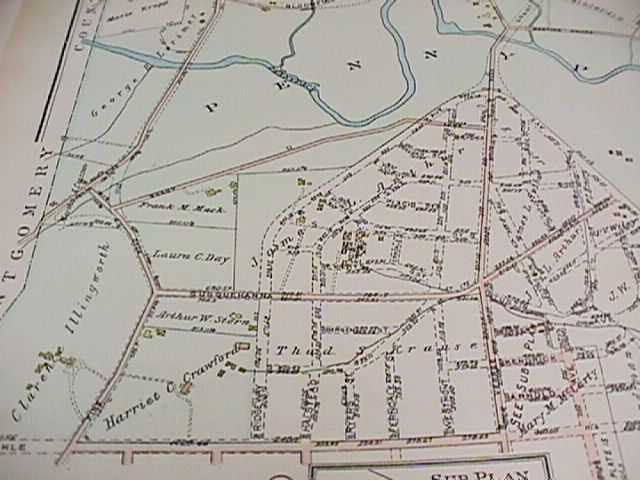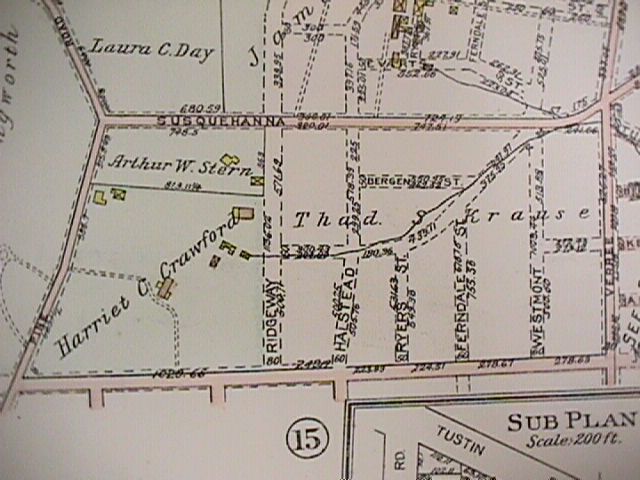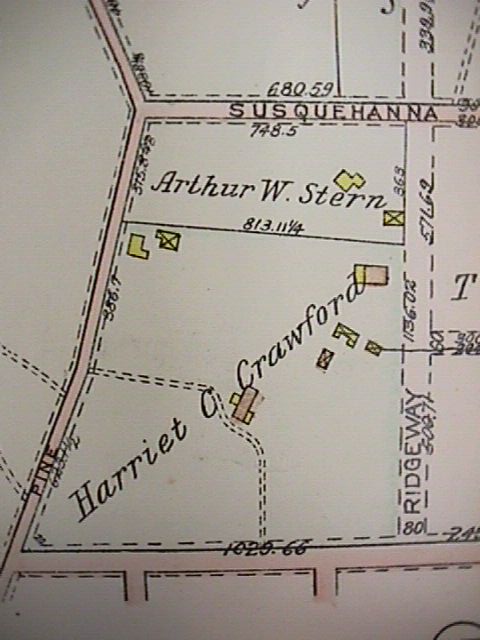Miers Fisher was the son of Joshua Fisher, who had moved to Philadelphia in 1745 from Lewistown in Delaware. Philadelphia at that time, and all through the Colonial period and for many years after, was the most important of the American cities and the center of the larger social and business life for Delaware, as well as Pennsylvania. His object in moving, as stated by himself, was to further the education of his children, and upon his departure he was presented with a written address by his fellow-townsmen expressing their great regard for him. He began business in Philadelphia as an importing merchant, and the firm of Joshua Fisher & Sons was one of the well known houses in Philadelphia engaged in foreign trade. The name of the firm, presumably in the handwriting of Joshua Fisher himself, can be seen to this day in the list of the signers of the Non-Importation (entered into by the merchants of Philadelphia just prior to the American Revolution), which hangs in Independence Hall, on Chestnut above Fifth.
His frequent voyages between Lewistown and Philadelphia had made him very familiar with Delaware Bay, and he constructed a chart of the Bay which is still extant, and a copy of which can be found in the Library of the Town of Newark, Delaware. This very copy of the map was recently (1894) advertised for sale in New York, and it was a great disappointment to my mother, upon sending to the stop indicated in the advertisement, to find that it had just been sold. Fortunately, however, it has gone into safe hands by being deposited in the Newark Library.
Joshua Fisher was evidently at home upon the sea, for it is stated in the Memoirs of Hannah Logan Smith, his grand-daughter, that is was at the instance of James Logan (secretary of William Penn, Chief Justice and first governor of Pennsylvania) that "Joshua Fisher was the first to take to sea and experiment upon the quadrant, then recently invented by Godfrey, but now (1835) bearing the name of Hadley."
His first residence in Philadelphia was on Walnut, between Front and Second Streets, while his warehouse was on the bank below Walnut Street, overlooking the Delaware River. In 1757 he built a house for himself on Front below Walnut, with his warehouse back of the dwelling. It was in the first mentioned house that my great-grandfather, Miers Fisher, was born in the year 1748.
Joshua Fisher also build for himself a country place called "The Cliffs" on the north bank of the Schuylkill about a mile from the present dam at Fairmount. The house is still standing and is now within the limits of Fairmount Park.
. . . . .
The combined strength, sweetness and beauty of the face of Sarah Redwood Fisher have been with me a very continuous source of admiration from my earliest days. She came to live in Philadelphia at the age of seventeen. Her future husband was at that time twenty-four years of age, and they married two years later, in the year 1774. It would seem that they took a more active part in the social life of the city then was usual among Friends, for a few months after their marriage we hear of them through the diary of John Adams, of Massachusetts, as having entertained him at a dinner in a manner that evidently gave him great satisfaction. In his diary, an extract from which can be found in the Rodman Book, page 56, he writes:
"We dined with Miers Fisher, a young Quaker and a lawyer. We saw his library which is clever, but this plain friend, with his plain, though pretty, wife, with her Thees and Thous, had provided us a most costly entertainment," etc. (Here follows a detailed list of the wines and dishes served). (The table on which this elaborate repast was served is now in my possession in the family room of the Museum at Southampton, L.I., having been bequeathed to me by my cousin, Sally Lewis (nee Warner), who was a granddaughter of Miers Fisher, and therefore a first cousin of my mother. At this table during the Colonial period and later, after the war of the Revolution was over, my great grandfather entertained various dignitaries who were either residents of or visitors to Philadelphia, among others General George Washington and Benjamin Franklin. Now in the possession of my cousin, Lydia Warner, is a Sharpless portrait of George Washington, given by him to Miers Fisher).
Of the sixteen children of Miers and Sarah Redwood Fisher nearly all died young, descendants surviving only to Redwood Fisher; Lydia Fisher (who married Benjamin Warner); my grandmother, Sarah Redwood Fisher (who married Samuel Longstreth); Hannah Fisher, who married William Price, and the youngest son, Jabez Maud Fisher, who was born in 1801 and died 1876.
The only one I ever knew was Uncle Jabez. Him I knew well, and he was often at our house throughout my boyhood and early manhood. Uncle Jabez was eighteen years of age at the time of his father's death, and being fond of anecdote and having a retentive memory, had much information which came directly from his father. The relations between my mother and her uncle were those of affectionate interest. His Wife had died in 1866, and his children, with whom from time to time we were much thrown, had become scattered, so that with the exception of a year or two spent by him in Europe with his son, Morton C. Fisher, in the early Seventies, he was a constant visitor at our house both in South 17th Street and South 22nd Street during the last years of his life.
His early youth had been spent at Ury, his father's country home. Ury was and is situated on the Pine Road near the village of Foxchase, some miles outside of Philadelphia. An account of it will be found in Townsend Ward's "Second Street and the Second Street Road, and their Associations." It was bought and improved by Miers Fisher in 1795, and it was he who gave it the name Ury, after the well-known seat of Robert Barclay in Scotland, to whom I have before referred in writing of Barclay Hall.
Of Ury my Uncle Jabez has related to me with zest certain anecdotes with reference to a visit of the two grandsons (or great grandsons) of William Penn, who passed some time in this country at the end of the last century (the 18th century). Evidently the Quaker spirit had not descended into the third generation, for the young men seem to have been possessed of ardent temperments and to have made things very lively in the Ury household. From the account of Uncle Jabez, they were evidently not teetotallers.
Grandma Fisher lived to an advanced age and died in 1847. From all I can learn her character and disposition endeared her throughout her life to all those who were in any way associated with her. I have always understood that my father, though her junior by fifty-six years, was particularly devoted to her.
excerpt from Samuel Longstreth Parrish, Early Reminiscences Associated with the Life and Family of My Mother Sarah Redwood Parrish, October, 1927.




|



